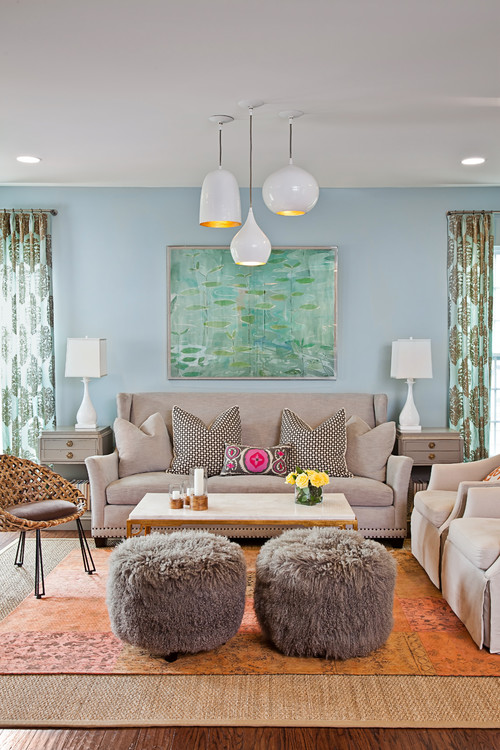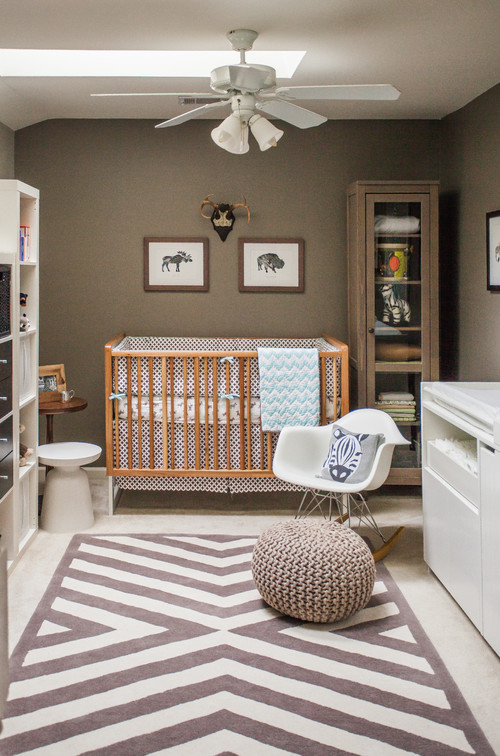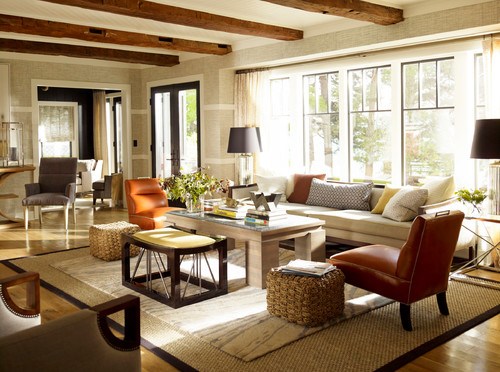Layering Rugs
Everyone knows that an area rug can be used to add warmth and texture to a room. More recently there has been an increased use of multiple rugs in one space. Layering rugs is a great way to elevate the style of a space, bring added comfort, and save you money! Check out our tips on how to incorporate this design trend into your home.
Start with a Neutral Base

If you want to try out the layered rug look, it is best to start with a neutral base. Jute, and sisal rugs are great options for a neutral base. These rugs are environmentally friendly and relatively inexpensive. These rugs are very sturdy as well, making them great for high traffic areas and homes with young children. Jute and sisal rugs also typically come in neutral tones. This makes them a great base for layered rugs. Jutes and sisals are some of the most popular rugs used in layering. If you have neutral wall-to-wall carpeting try adding a small area rug to define spaces throughout the room. If you have a large bedroom with a sitting area, use an area rug to anchor that sitting area on top of your wall-to-wall carpeting. It will add interest to your space and make the floor even more comfortable. The average homeowner does not think to add an area rug on top of their wall-to-wall carpeting. But typically, wall-to-wall carpeting provides the perfect neutral base for a brightly colored/patterned rug.

Keep a Similar Color Scheme or Pattern
If you want to get adventurous with the layering effect you can layer rugs with multiple colors and patterns. It is important to understand that while mixing colors and patterns for added interest to a space, it can also create a chaotic look. When choosing rugs with multiple colors it is important to choose rugs within a similar color family. It is also important for layered rugs to have similar patterns as well. A chevron pattern with a circular pattern rug will create a disorganized look. So if you do try layering with multiple colors, try one solid rug underneath a patterned rug in a similar color scheme. The one exception to this rule is oriental rugs, oriental rugs tend to have a similar color palette and similar themes within their patterns, making them easier to mix and match than most patterned rugs.
Layer Smaller Rugs
Using multiple smaller rugs in a space is a perfect way to cover your floor and spend less money. Larger room-sized rugs can be costly. By pairing multiple smaller rugs you can get the coverage you need at a fraction of the price. Using a small plush rug is also a great way to get extra comfort and add dimension to a room with wall-to-wall carpet. Consider adding a plush rug next to your bed or in a nursery to create added padding.
Choose the Right Room

You do not have to add the layered look to every room; that might be excessive. Rather, start with a larger room. The living room is the perfect space to use a neutral base with a patterned design. This brings texture and depth to the room and makes the patterned rug stand out. It also creates a more welcoming environment if people ever need to sit on the floor. Bedrooms and nurseries are other spaces that are perfect for incorporating the layered look. This creates added comfort and prevents your feet from being cold when you step out of bed and onto the floor.
Choose the Right Rug Pad
Now that you have your layered rugs on your floors make sure they stay put! Area rugs have a tendency to wrinkle and buckle even when placed on top of another rug. While your rug will not move around too much on top of another rug, prevent any hazardous buckling with the proper rug pad. Our No-Muv rug pad is specifically designed for rug on top of carpet. No-Muv will keep your layered rugs in place and prevent any hazard to you and your family. If you are laying an area rug on top of carpet, simply lay No-Muv down first and place the area rug on top. It is that easy! Try out the layered look in your home today and don’t forget to use your No-Muv rug pad!




 INTERNATIONAL SHIPPING
INTERNATIONAL SHIPPING













